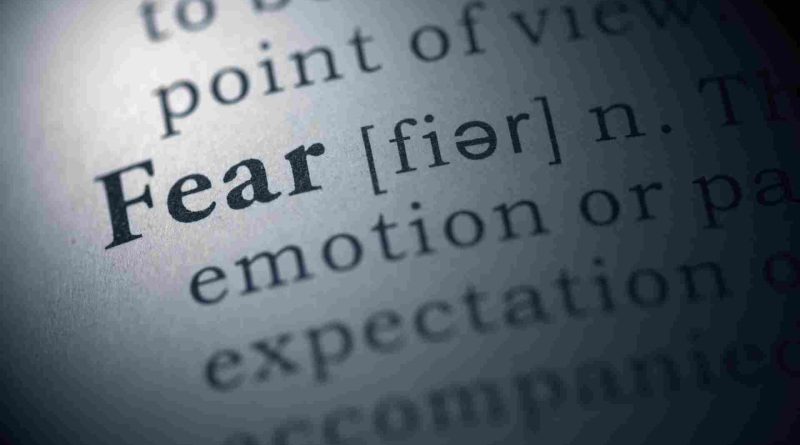The Fascination Behind Fear: Unveiling the Science of Thrilling Chills
There’s a peculiar ecstasy in the grip of terror – researchers suggest that even mild fright can fortify enduring psychological resilience.
Palms moisten, heart races, muscles tense. A shiver down your spine, a knot in your stomach. After fear recedes, it leaves behind a peculiar sense of satisfaction. But is this mere relief from survival, or is there more to it?
The Inner Battle
Nestled deep in the brain’s core lies the amygdala, a small almond-shaped cluster of neurons governing the fear response. When faced with fear, the amygdala sets off a chain reaction. It prompts the hypothalamus, which in turn activates two bodily systems – the sympathetic nervous system and the adrenal cortical system. This triggers a surge of hormones, initiating the fight-or-flight response.
Adrenaline heightens alertness, hastening the heartbeat and directing blood flow from the core to the muscles essential for action. Meanwhile, cortisol elevates blood pressure. Around vital organs, blood vessels dilate, flooding them with oxygen and nutrients. Breathing accelerates, nourishing the brain with fresh oxygen, while glucose levels spike, providing a sudden burst of energy – preparing the body for action.
“Although we’ve deciphered some aspects of neural fear networks and their behavioral coordination, many mysteries remain,” explains Dr. Charlotte Lawrenson, a neuroscientist from Bristol University.
When confronted with sensory stimuli or potential threats, two brain pathways activate. The first is swift, transmitting information from the sensory thalamus to the amygdala for immediate response to the threat.
The second path is more intricate. Information travels from the thalamus to the cortex, the brain’s outer layer associated with consciousness, reasoning, and memory. Here, the threat undergoes analysis, enabling us to gauge its genuineness.
“The exact locus of fear in the brain eludes us,” Lawrenson states, “but it likely involves the coordinated activation of multiple brain regions constituting a fear network.”
If the threat proves real, other brain regions spring into action, orchestrating a comprehensive bodily response to danger. This includes the periaqueductal grey, overseeing autonomic, behavioral, and antinociceptive reactions to stress and injury, dampening pain perception and kickstarting involuntary physiological processes.
“The memory of the danger gets etched and stored in the hippocampus,” adds Lawrenson’s colleague, Dr. Elena Paci, “enabling us to recall and recognize the threat upon future encounters.”
A Glimpse into Our Deepest Fears
Fear, an ancient emotion, has woven itself into human history through spine-chilling narratives. Early societies employed frightening tales to educate children about potential hazards like wolves and predators. Today, cinema reflects society’s collective anxieties. In the 1954 sci-fi classic, Godzilla emerged as a product of nuclear radiation, echoing society’s apprehension following World War II’s atomic bombings.
Horror films frequently explore technological themes – from rogue robots like Westworld’s hosts to homicidal AIs such as Hal in 2001: A Space Odyssey and Skynet in The Terminator. The late 1970s and 1980s witnessed the rise of serial killers in public consciousness, mirrored by characters like Michael Myers and Freddy Krueger.
In March 2020, amidst the pandemic’s frenzy, downloads of Contagion, a film depicting a deadly outbreak, surged. Why the fascination with a horror film reflecting their current reality? Professor Marc Malmdorf-Andersen and his team suggest that horror films offer a platform for managing uncertainty.
Navigating the Unpredictable
An associate professor at Denmark’s Aarhus University, Malmdorf-Andersen delves into the cognitive processes underpinning play and learning. “Immersing oneself in these fictional realms is akin to drafting a manual for worst-case scenarios,” he explains.
During the Covid pandemic, a study on horror enthusiasts revealed they exhibited greater psychological resilience than non-fans.
“They’ve been exposed to similar scenarios, leveraging that experience to navigate novel, uncertain circumstances,” Malmdorf-Andersen notes. “Recreational fear might enhance emotion regulation and coping mechanisms.”
According to Malmdorf-Andersen, relishing fear mirrors a form of play. “Finding enjoyment in eerie stimuli stems from grappling with unpredictability,” he posits. “Much like children seek moderate uncertainty and surprises in play to comprehend them.”
Indeed, researchers at Exeter University contend that risky, fear-inducing play can mitigate anxiety. Play, Malmdorf-Andersen asserts, equips individuals to confront unfamiliar situations, making the unpredictable seem manageable.
Finding the Balance
To explore fear’s relationship with enjoyment, Malmdorf-Andersen and his team observed visitors to a haunted house attraction. Here, participants willingly subjected themselves to terror induced by brain-eating zombies, chainsaw-wielding maniacs, and child-devouring fiends. Researchers monitored their heart rates, filmed their reactions, and gauged their emotional states throughout the experience.
“At Dystopia Haunted House, guests confront 70-100 scare actors nightly,” Malmdorf-Andersen reveals. “They’re exposed to various challenges – from disgust and fear to jump scares, solitude, darkness, and claustrophobia.” Their findings indicated that humans prefer to tread lightly beyond their comfort zones, rather than straying too far.
“Our findings suggest a ‘sweet spot’ between fear and enjoyment,” Malmdorf-Andersen suggests. “A delicate balance where the context isn’t overwhelmingly terrifying, yet not entirely benign either. This equilibrium maximizes enjoyment.”
At this juncture, a surge of fear swiftly followed by relief triggers the release of endorphins and dopamine in the brain, delivering a euphoric rush.
When Fear Oversteps
Nevertheless, it’s crucial to recognize individual differences. Each person possesses a unique fear threshold, and there’s a fine line between harmless amusement and genuine dread. Excessive fear can precipitate distress and dysfunction. Globally, approximately 275 million people grapple with anxiety disorders, which can become chronic and debilitating, altering life trajectories.
“Different individuals exhibit varying levels of brain activity in response to stimuli,” Paci remarks.
What elicits thrills in one person might induce genuine terror in another. So, this Halloween, embrace the scare – but in moderation.

